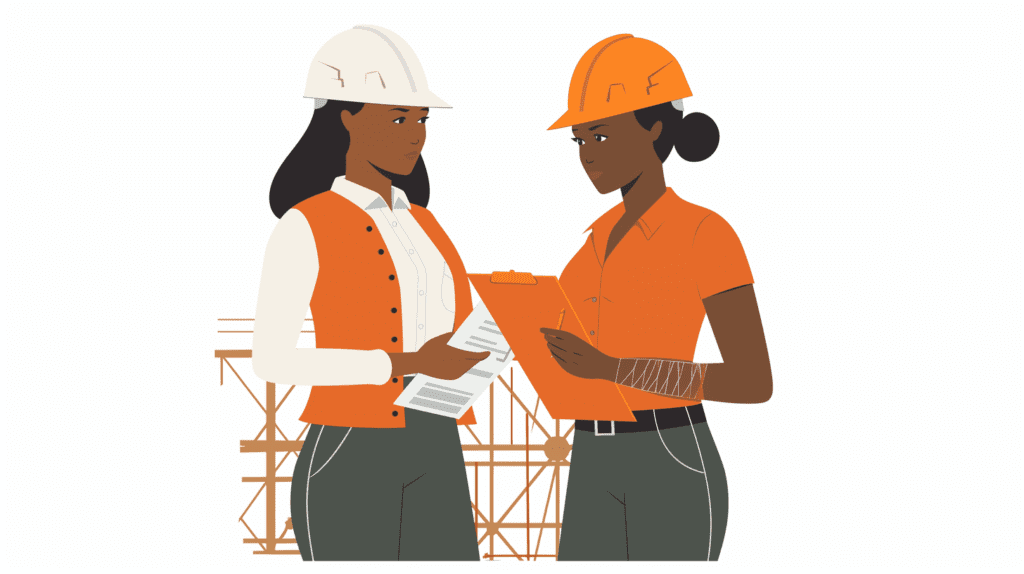Why a Workplace Safety Survey is the Key to Keeping Your Employees Safe
When it comes to workplace safety, an organization’s fatal flaw can sometimes be that leadership simply doesn’t know what they don’t know. Employers all strive to create and maintain the safest possible work environments that they can. But in many cases, employees themselves are in the best position to identify on-the-job risks.
Gathering these “hidden” insights and employee feedback is absolutely key to keeping your workforce safe. But how can employers accomplish this? Enter: the workplace safety survey.
A workplace safety survey, when used as part of a well thought out safety revamp plan, can help address problems you didn’t know you had. In this article, we’ll discuss how you can best implement these surveys in your workplace, so you can reduce the risk of accidents and injuries for your team.

What is a Workplace Safety Survey?
A workplace safety survey is a tool designed to obtain feedback from employees on their perceptions of safety conditions, practices, and unaddressed risks on the job or within the work environment.
Your workplace safety survey will be unique to—well—your workplace. If your employees frequently work offsite, your survey will reflect the variance in workplaces. If your employees work in-office only, your survey may focus in on emergency preparedness understanding, ergonomic conditions, or security issues.
Who Should Use a Workplace Safety Survey?
In short, all employers should utilize a workplace safety survey. No matter how unique your workplace is, a workplace safety survey can greatly benefit your employees. These surveys give employers the chance to dive deep into their workforce’s thoughts and ideas regarding safety protocols, equipment, training, and overall safety culture.
The insights garnered from these surveys provide employers with a greater understanding of what they’re doing right when it comes to workplace safety, and where they could stand to improve.
What are the Benefits of Administering a Workplace Safety Survey?
When you’re looking to revamp your safety culture, a workplace safety survey is the best place to start. The benefits of starting your enhanced safety initiatives with a survey are numerous. Consider the following:
1. You have data to use as benchmarks as your safety initiatives progress. Kicking off your safety revamp with a workplace safety survey allows you to measure your progress as your initiatives progress. Distributed at critical intervals, a workplace safety survey can alert you to which efforts are paying off, where any changes could stand to be made, and how best to pivot in order to meet your goals.
2. You’ll identify safety hazards and potential risks you didn’t know were present in the workplace. The best thing about a workplace safety survey is undoubtedly the insights they uncover—and the changesemployers are able to make because of those valuable insights. While much of the data you’ll uncover in your survey would have otherwise stayed under wraps, going through the process of collecting opinions in a formalized way helps ensure that no stone goes unturned.
3. You’ll be able to take the pulse of your employees’ attitudes and current safety culture. Do you really know how your employees feel about your current safety culture? If you ask them in person, you can’t be sure they’ll be honest. It’s not uncommon for employees to steer away from “rocking the boat” when asked directly to point out problems or provide any feedback that’s less than stellar. If you’re aiming for full honesty, an anonymized or partially anonymized workplace safety survey could be your best bet.
4. You’ll demonstrate your commitment to safety compliance. Suspect that your employees may feel that you’re not committed to safety and compliance as an organization? Administering a workplace safety survey is the first step in changing the narrative. Distributing a survey that requests open and honest feedback (whether that feedback is negative or positive) lets your employees know that you’re ready to fix what’s broken, and that you care what they have to say. It also reinforces that—yes—safety does matter, and that you’re endeavoring to create or strengthen a culture of workplace safety compliance. When you start your safety revamp by administering a workplace safety survey, your employees won’t have to wonder if their safety matters, or if their concerns are heard.
5. You’ll reduce the risk of accidents, injuries, and other types of harm. As we’ve discussed, your workplace safety survey is likely to uncover issues and areas for improvement that you weren’t previously aware of. As a consequence, you’ll be able to nip those issues in the bud before they manifest into larger, more tangible problems. Ultimately, you’ll be able to reduce or prevent costly and potentially devasting, accidents, injuries, and other harm.
Workplace Safety Survey Sample Questions:
You know by now that your workplace safety survey will be unique to your organization, industry, operations, worksites, and employees. But it’s always a good idea to review some strong sample workplace safety survey questions in order to start getting the gears moving.
Keep in mind that great employee survey software can recommend survey questions that will help you garner the best insights.
Consider the following workplace safety survey sample questions:
Office Security Survey Questions:
- Do you feel safe entering and exiting the building, including walking through the parking garage or deck?
- Do you feel the office Information Technology systems (i.e., the computers, internet connection, and phone lines) are secure?
- Do you feel there are adequate measures in place to prevent unauthorized access into the building or worksites?
- Do you feel safe while you’re at the worksite or in the building?
Workplace Violence Survey Questions:
- Do you now or have you ever felt threatened or harassed while at work?
- Are you aware of the procedures for reporting harassment and violence at work?
- Do you feel that there is a culture of violence and harassment at work?
- Have you witnessed harassment or a violent outburst amongst your coworkers or supervisors?
- Do you feel that any of your coworkers, managers, or supervisors use unnecessarily harsh language or physical gestures, including violence or inappropriate statements while at work?
Get tips, examples questions, ways to boost scores, and more!
Workplace Safety Compliance Risk Survey Questions:
- Is the safety training you’ve received adequate and appropriate for your actual day-to-day work and duties?
- Have you ever been asked or required to perform a task or complete an assignment that made you feel unsafe?
- Are you aware of the procedures for reporting compliance concerns or safety risks?
- Do you feel that you are able to report compliance concerns or safety risks without the fear of backlash or retaliation?
- Do you feel that you have the appropriate resources, equipment, and personal protection in order to complete your duties in a safe manner/
Office Ergonomics Survey Questions:
- Does the set-up of your work station cause you physical pain during or after your job?
- Are you able to take breaks to move around and stretch during the work day?
- Does your work area have adequate lighting for you to effectively complete your job duties?
- Have you received training and instruction on proper ergonomic practices?
Workplace Fire Safety Survey Questions:
- Are you aware of the appropriate fire escape route for your work station?
- Have you practiced your assigned fire escape route in the past six months?
- If a fire were to occur in the workplace, would you feel confident navigating your assigned fire escape route in a safe and orderly way?
- Have you received adequate and appropriate fire safety training?
- Can you locate the nearest fire extinguisher to your work station?
- Are there working exit signs near your work station?
- To your knowledge, are the fire alarms near your work station properly and frequently tested?
Chemical and Hazardous Material Survey Questions:
- Do you have access to Safety Data Sheets for each of the chemicals you use in your job?
- Are the chemical storage facilities at your workplace adequate and appropriate?
- Do you have all the necessary personal protection equipment needed to do your job safely?
- Are all chemicals and hazardous materials clearly and appropriately labeled at your worksite?
- Do you feel that chemicals and hazardous materials are handled appropriately at your worksite?
Equipment and Machinery Survey Questions:
- Have you received adequate and appropriate training for each piece of machinery with which you come into contact with as part of your role?
- Does the machinery you come into contact with as part of your role ever malfunction or cause safety issues?
- Are you aware of the proper routes to report safety issues or problems with machinery?
- Do you feel that the service and maintenance of all machinery is adequate and appropriate?
- Do you feel that the machinery and equipment you come into contact with as part of your role is safe?
Next Steps
If you feel that you and your company are ready to send a survey on the topic of workplace safety, Peoplelytics can help! We have a prebuilt survey template where you can schedule and send an employee pulse survey on this topic or 50 others, customizing the schedule, reminder emails, and enabling or disabling or editing specific questions. Schedule a demo at a time that works for you today to learn more!






